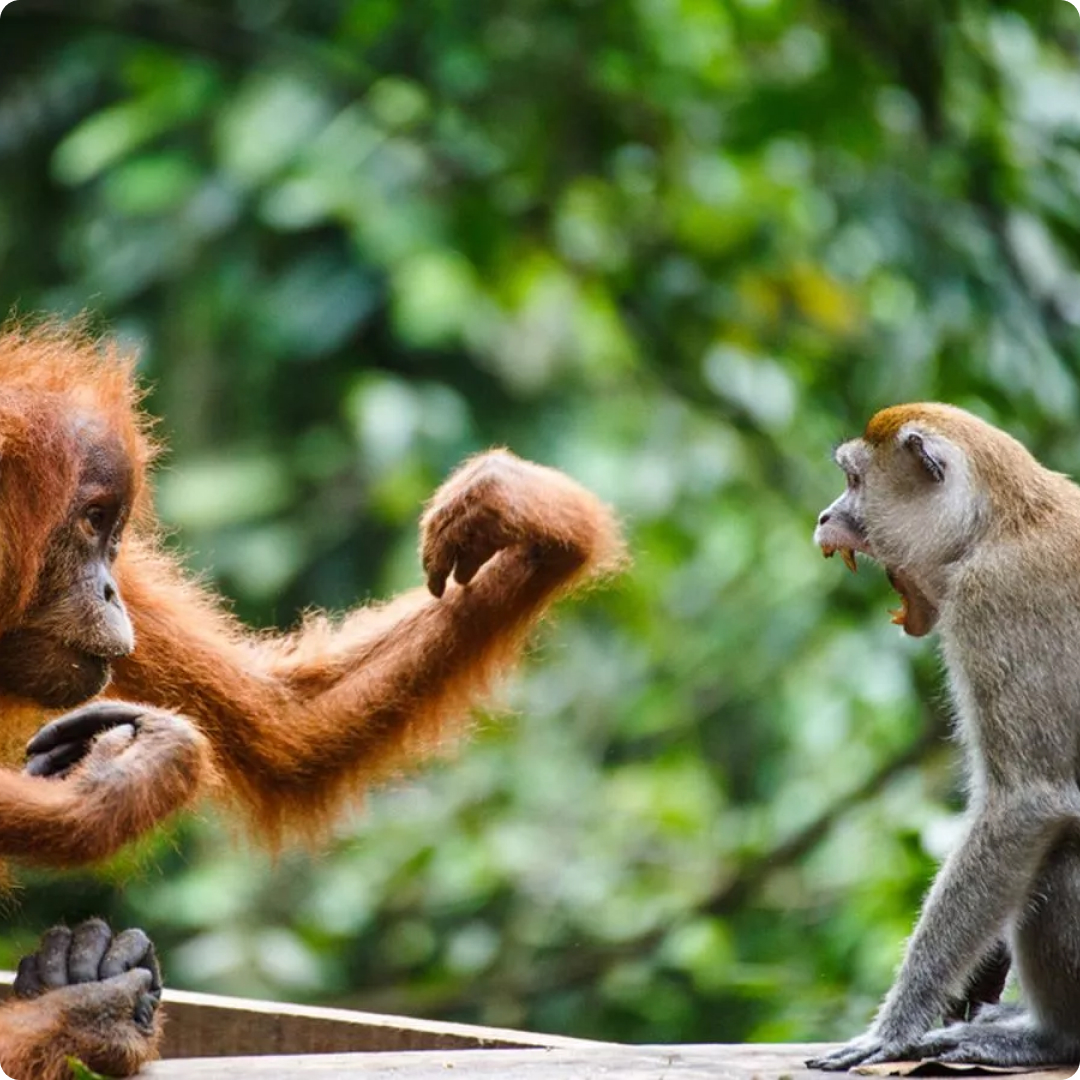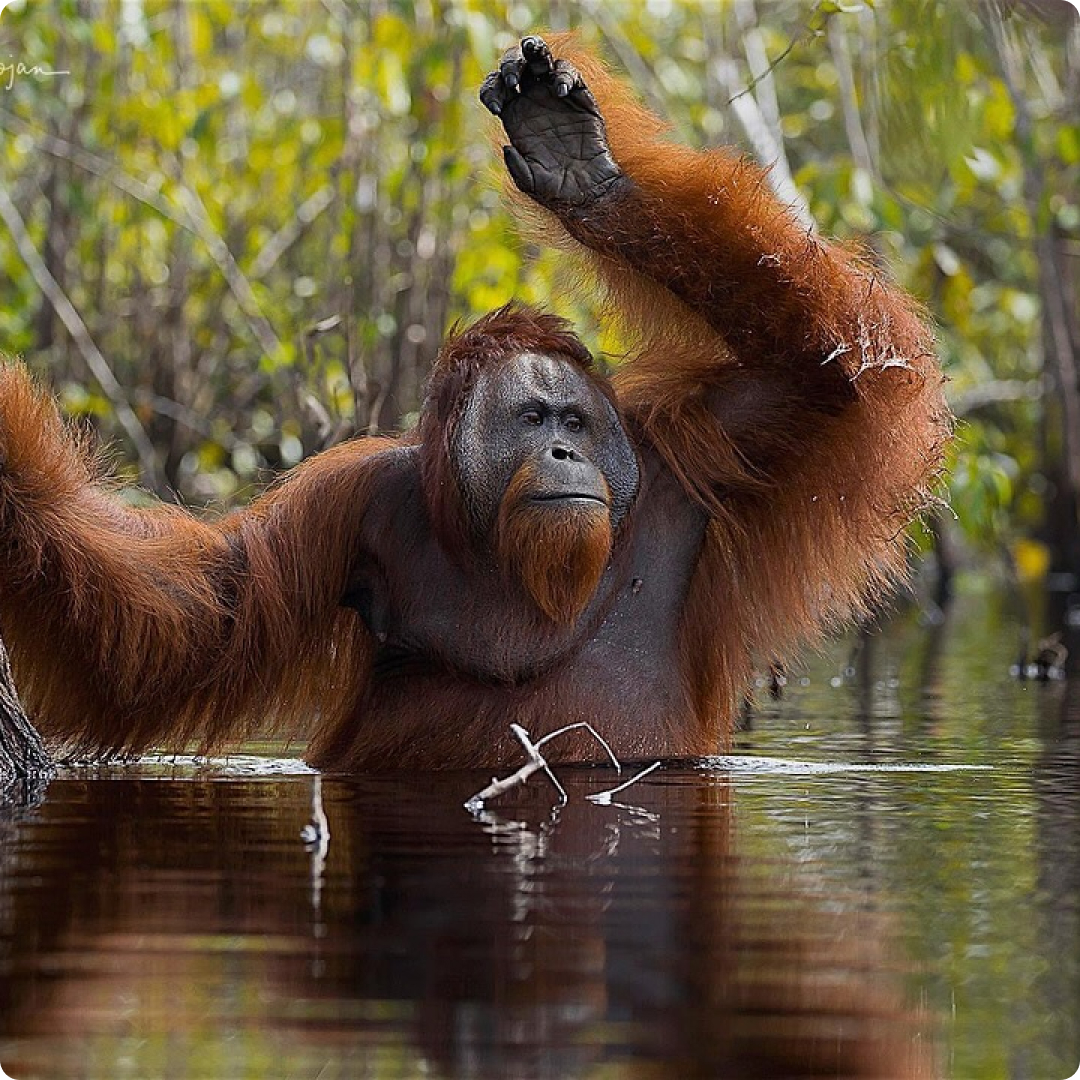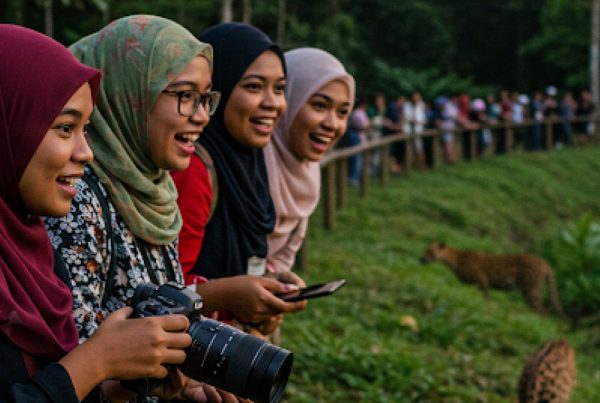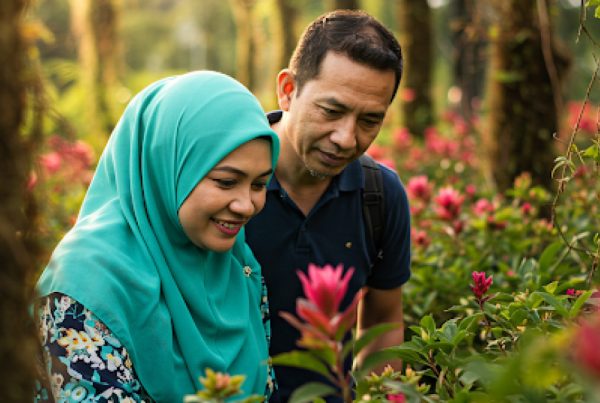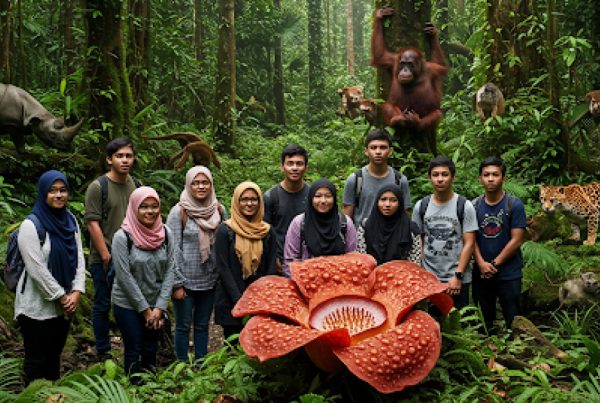The Bornean orang utan (Pongo pygmaeus) is a critically endangered species and a symbol of Malaysia’s rich biodiversity. Found primarily in the tropical rainforests of Borneo, this great ape is renowned for its intelligence, unique behavior, and vital role in forest ecology.
As we approach the Borneo Flora Festival 2025 in Labuan, it’s an opportune moment to delve into the fascinating world of the Bornean orangutan and understand why it deserves our admiration and protection.
What is the Bornean Orangutan?
The Bornean orangutan is one of three orangutan species, distinguished by its reddish-brown hair and remarkable arboreal lifestyle. Endemic to Borneo, it inhabits both lowland and montane rainforests, playing a crucial role in seed dispersal and maintaining forest health.
Specialities of the Bornean Orangutan
- Arboreal Adaptations: With long arms spanning up to 1.5 meters, they navigate the forest canopy with ease.
- Intelligence: Known for using tools, such as sticks to extract insects or leaves as umbrellas, showcasing advanced problem-solving skills.
- Diet: Primarily frugivorous, they consume over 400 types of food, including fruits, leaves, bark, and occasionally insects.
Read : 8 Iconic Borneo Fauna in Malaysia You Need to Know!
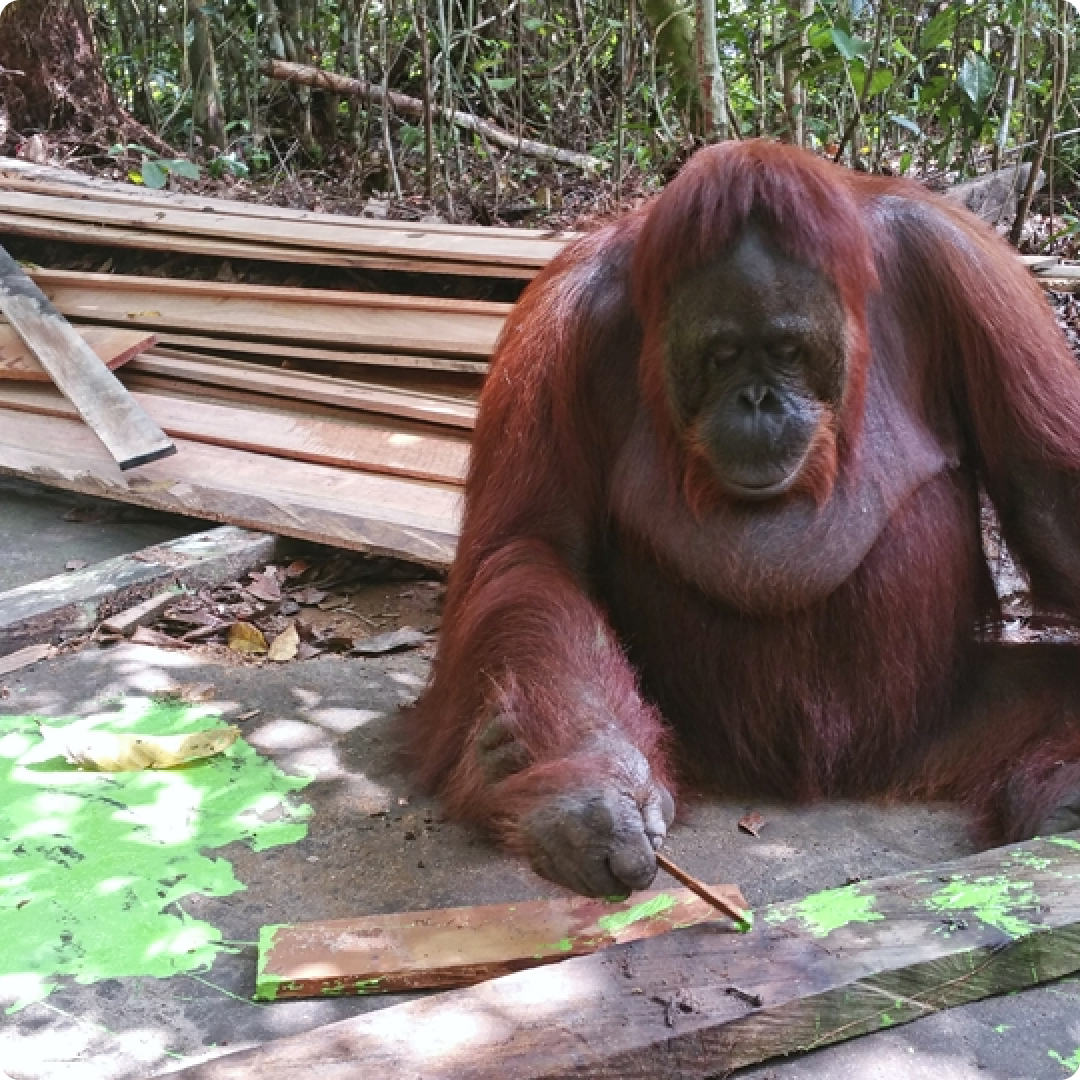
Bornean Orangutan Family Tree
The orangutan belongs to the family Hominidae, sharing this lineage with gorillas, chimpanzees, and humans. Within the genus Pongo, the Bornean orangutan is one of three species, alongside the Sumatran and Tapanuli orangutans.
Read : 25 Fun Facts About Borneo Jungle Ecosystem (2025 Edition)
Differences Between Orangutan, Monkey & Chimpanzee
- Tail: Monkeys possess tails; orangutans and chimpanzees do not.
- Locomotion: Orangutans are primarily arboreal, while chimpanzees and many monkeys are more terrestrial.
- Social Structure: Chimpanzees are highly social, living in large groups; orangutans are more solitary.
- Intelligence: All exhibit intelligence, but orangutans are particularly noted for their problem-solving abilities.
Many people often confuse orangutans, monkeys, and chimpanzees because they all look somewhat similar and live in forests. However, these three animals are actually quite different. They all belong to the primate family, which includes humans too, but only some of them are considered great apes.
Let’s start with monkeys. Monkeys are usually smaller than the other two and have one clear feature that sets them apart—they have tails. Most monkeys are quick, love to jump from tree to tree, and live in large groups. Some examples include the capuchin monkey, the howler monkey, and the proboscis monkey. Monkeys can be found in many parts of the world, such as Asia, Africa, and South America. They are clever and energetic, but not as closely related to humans as apes are.
Next, we have the orangutan, which is a great ape. Orangutans are much larger than monkeys and have no tails. They have long, strong arms, reddish-orange hair, and live in the rainforests of Borneo and Sumatra in Southeast Asia. Orangutans are very smart and are known for using tools, such as sticks to get insects or honey. Unlike monkeys, orangutans usually live alone and prefer quiet forest life. They move slowly through the trees and spend most of their time up high in the branches.
Then there’s the chimpanzee, another great ape and the closest living relative to humans. Chimpanzees do not have tails either. They are found in African forests and are very social animals, living in large families called troops. Chimps are incredibly intelligent. They can use tools, play, show emotions, and even learn basic human sign language. They are curious and playful, and they often communicate using sounds, gestures, and facial expressions.
10 Facts About Bornean Orang Utan
- Critically Endangered: The Bornean orangutan is listed as critically endangered due to habitat loss and poaching.
- Population Decline: Estimates suggest just over 100,000 individuals remain in the wild.
- Long Lifespan: They can live up to 45 years in the wild and even longer in captivity.
- Slow Reproduction: Females give birth once every 6-8 years, making population recovery challenging.
- Tool Use: Observed using sticks to extract insects and leaves as makeshift umbrellas.
- Distinctive Appearance: Males develop large cheek pads and throat sacs, which are absent in females.
- Diet Diversity: Consume a varied diet, including fruits, leaves, bark, and occasionally small animals.
- Habitat Range: Found in both lowland and montane rainforests across Borneo.
- Cultural Significance: Considered a national treasure and symbol of Malaysia’s natural heritage.
- Conservation Efforts: Numerous organizations are working to protect their habitats and prevent extinction.
Bornean Orang Utan Physiology
Bornean Orang Utans have long, strong arms, reddish-brown hair, and no tails. Males are larger (up to 100 kg) and grow big cheek pads called flanges. They’re built for life in the trees.
Bornean Orang Utan Diet
Mostly fruits like figs and durians. They also eat leaves, bark, insects, and flowers. Their diet helps spread seeds and grow new trees.
Bornean Orang Utan Routine
They wake up early, search for food, rest midday, and build a new nest every night high in the trees. They live mostly alone and move slowly and wisely.
Bornean Orang Utan Lifespan
30–40 years in the wild. Up to 50 years in protected areas. Babies stay with their mothers for 6–8 years to learn survival skills.
Bornean Orang Utan Intelligence
Very smart. They use tools, remember tree locations, and learn by watching. Orangutans in captivity can even solve puzzles and use simple sign language.
Read : Borneo Flora And Fauna : Uniquely Wild. Uniquely Ours
“The orangutan is not just an animal; it is a symbol of our connection to the natural world and a reminder of our responsibility to protect it.” — Dr. Jane Goodall
Conclusion
The Bornean orang utan embodies the rich biodiversity and ecological significance of Malaysia’s rainforests. Understanding and appreciating this majestic creature is crucial for its conservation and the health of our environment. To witness the wonders of the Bornean orangutan and other unique flora and fauna, join us at the upcoming Borneo Flora Festival 2025 in Labuan from July 26 to July 30 at the Kompleks Sukan Laut Antarabangsa Labuan. Experience firsthand the beauty and importance of our natural heritage.
Refer to the infographic below for more information!
Read : All You Need To Know About Borneo Flora Festival 2025!




